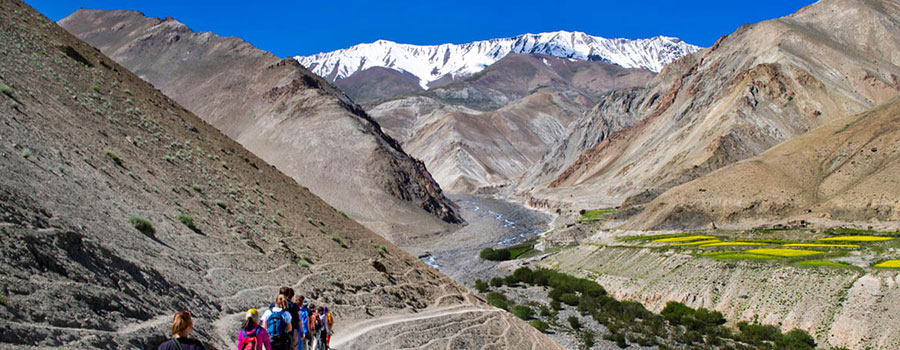Top 6 Welcome Rituals From Around the World

Traveling is not just about visiting beautiful places and famous landmarks, it’s also about immersing oneself in new cultures and traditions. One of the most exciting ways to do this is by experiencing the unique welcome rituals of different countries. These rituals are not just about greeting visitors but are also deeply ingrained in the local culture and tradition. They offer a glimpse into the local lifestyle and beliefs and provide an opportunity to connect with the locals on a deeper level.
The Maasai “Jumping Dance”

The adamu dance, also known as the jumping dance, is a unique and lively welcome tradition practiced by Kenya’s Maasai Mara tribes. This energetic dance performed by up to 12 warriors from a single tribe, is accompanied by chanting and war cries and involves telling a story through their movements. The highlight of the dance is the competition to see who can jump the highest into the air, with guests also given the opportunity to join in and compete with the Maasai. This is a great way to experience the vibrant and hospitable culture of the Maasai people, and adds an exciting and memorable element to any visit to Kenya’s Maasai Mara region.
New Zealand’s Maori Hongi

The hongi is a fascinating and deeply meaningful ritual that showcases the rich cultural heritage of the Maori people in New Zealand. It offers a unique opportunity for visitors to connect with the country’s indigenous culture in a profound way.
Beyond being a simple nose-to-nose touch, the hongi is considered a spiritual exchange of breath and the sharing of the “ha” or life force between two people. It’s a way to acknowledge each other’s presence, show respect and create a bond.
While it’s commonly practiced in formal Maori gatherings and ceremonies, hongi is also becoming increasingly popular as a welcome ritual in the tourism industry. Many hotels, tourist attractions, and cultural centers offer hongi as part of their welcome to visitors, providing them with a chance to experience this powerful tradition firsthand.
Overall, the hongi is a beautiful expression of the Maori culture, and it’s a must-try experience for anyone visiting New Zealand who wants to gain a deeper appreciation of the country’s heritage and customs.
The Fijian Sevusevu Ceremony

The sevusevu ceremony in Fiji is not just a simple welcome ritual, but a significant cultural activity that highlights the importance of community and respect for local customs. It is an ancient practice that still holds great significance for Fijians today, particularly in rural areas where traditional village life is still preserved.
The ceremony involves presenting a gift to the chief of the village as a sign of respect and to seek permission to enter the community. The gift is usually something of value, such as kava root, which is considered a symbol of goodwill and peace. The chief then accepts the gift and offers a formal welcome to the visitors, which often includes the sharing of kava.
The process of selecting and presenting a gift is a crucial aspect of the sevusevu ceremony, as it demonstrates an understanding and respect for the culture and customs of the local people. The ceremony is also an opportunity for visitors to learn more about the traditional way of life in Fiji and to form a connection with the local community.
Participating in a sevusevu ceremony is a unique and enriching experience that allows visitors to fully immerse themselves in Fijian culture and gain a deeper understanding of the importance of community and tradition in this island nation.
Fragrant Omani Coffee and Incense

The Omani culture is steeped in tradition, and hospitality is considered a core value. The Omani greeting ritual is a reflection of this. Upon visiting an Omani home, guests are typically welcomed with Arabic coffee, called Qahwa in the local language. The coffee is brewed and served fresh and is often spiced with cardamom, cloves, and saffron, which gives it a unique and aromatic flavor.
Along with the coffee, guests are usually offered delicious local treats such as dates, nuts, and baked goods. This custom of welcoming guests with refreshments has been a part of Omani culture for generations. It serves as a symbol of friendship, and guests are expected to accept the coffee and treats as a gesture of goodwill.
In return, it is customary for guests to present their hosts with a small gift as a token of appreciation before leaving. Historically, frankincense was the traditional gift given, but today, any thoughtful gift is appreciated. By taking part in this ritual, visitors have the opportunity to experience the warmth and hospitality that is characteristic of the Omani culture.
The Australian Aboriginal “Welcome to Country”

The practice of respecting indigenous cultures and traditions has become increasingly important in recent years, and Australia’s Welcome to Country and Acknowledgement of Country customs are no exception. These rituals offer a meaningful way to honor the land’s traditional custodians and promote cultural understanding.
The Welcome to Country ceremony, which is often performed by elders or community leaders, is a powerful expression of indigenous culture. Through singing, dancing, or speeches, visitors are invited to acknowledge the country’s history and to show respect for its traditional owners. The ceremony can be a formal way to start a business meeting, conference, or other events, and can help set the tone for respectful and culturally sensitive interactions.
The Acknowledgement of Country is another way for non-natives to show respect and recognition for the traditional custodians of the land. It is a brief statement that recognizes the traditional owners of the land and their ongoing connection to it. The statement is often read at the beginning of meetings, events, and ceremonies to show respect for the land and its people.
Both the Welcome to Country and Acknowledgement of Country customs are important parts of Australia’s efforts to promote reconciliation and understanding between indigenous and non-indigenous people. By acknowledging the land’s traditional custodians and honoring their cultural traditions, visitors can show their respect for Australia’s indigenous cultures and help build a more inclusive and respectful society.
India’s Royal Welcoming Ceremony

In India, the tradition of hospitality is deeply ingrained in the culture, with the belief that a guest is equivalent to a god. The welcome ceremony is one of the ways that this tradition is expressed and is especially prevalent in heritage hotels and palaces.
Upon arrival, guests are greeted with various ritual items that add to the warm and inviting atmosphere. Fragrance or incense is used to purify the surroundings, a lamp is lit to light up the way, a tilak made of vermillion and turmeric is painted on the forehead to signify respect, and a garland of fresh flowers is presented to symbolize goodwill.
While the name of the welcome ceremony may suggest that it is reserved only for royalty, it is actually a common practice at many accommodations, including the Taj Rambagh Palace and Umaid Bhavan in Rajasthan. This tradition adds a touch of cultural richness and tradition to the guest’s stay, making them feel truly welcome and appreciated.



